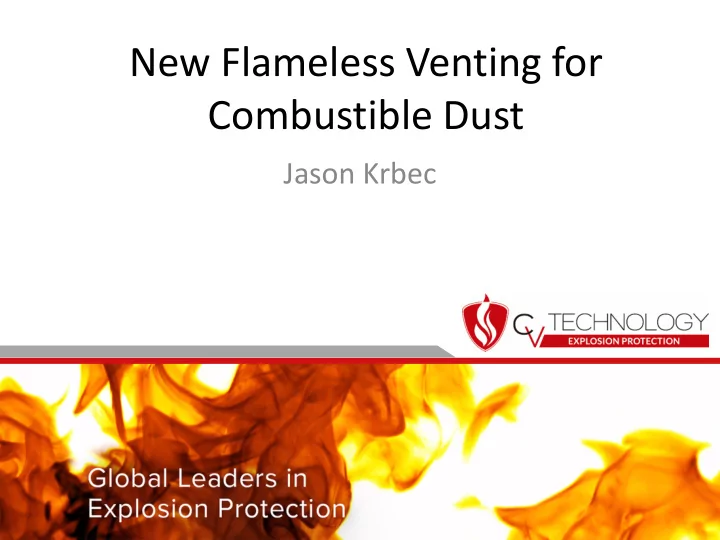

New Flameless Venting for Combustible Dust Jason Krbec
Combustible Dust • Combustible dust a continual hazard in the pulp and paper industry • Dust Hazard Analysis (DHA) are a requirement in NFPA standards • New technologies are needed to handle these hazards
Pulp and Paper Combustible Dusts • Wood • Paper • Coal • Petcoke • Fly Ash • Resins • Corn Starch
Sources of Combustible Dust • Reel cutter • Bailing presses • Shredders • Extraction system • Starch handling • Boiler/fly ash systems • Dust collection systems
Flameless Vents • Use a flame arrestor on an explosion vent to vent indoors • Allows for venting in occupied areas • Easier retrofitting of explosion protection • Limited to no maintenance
How It Works Flame Arrestor Explosion Vent Mating Flange
How It Works Stage 1 Stage 2 Pressure rise from a deflagration opens the rupture panel The flame front of the deflagration makes full contact with the allowing dust and flame to enter the flameless vent mesh of the flameless vent and the quenching process begins Stage 4 Stage 3 As the hot gases cool the flameless vent allows cool air to The deflagration is fully quenched and begins to contract enter the vessel and prevent a vacuum from forming The entire explosion quenching event takes place in less than 500 milliseconds
How It Works
Different Types of Flameless Vents • Round (quench tubes) – Most efficient – Handle higher Kst dust – Handle larger volumes Box (quench box) • – More vent area – More economical – Limited in applications Duct Boxes • – Designed for bucket elevators – Slimmer profile – Limited volumes
Dust Collectors and Pneumatic Conveying – Flameless Venting
Fly Ash Recovery System – Flameless Venting
Questions
Recommend
More recommend